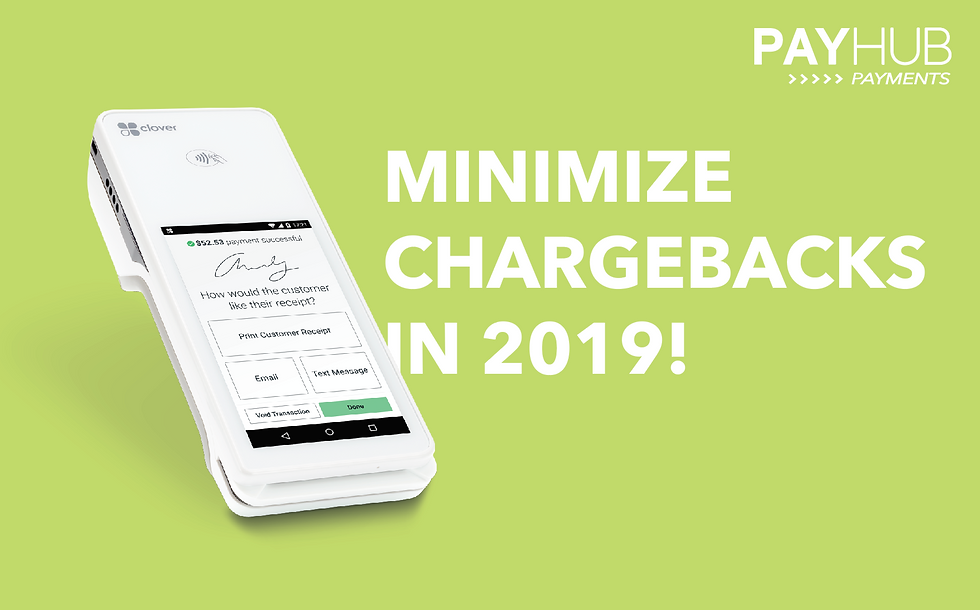Minimize Chargebacks in 2019
- austin6039
- Jan 17, 2019
- 2 min read

Chargebacks can really be a pain when you’re running a business. It’s not something anyone wants on their to do list, but unfortunately it does happen from time to time when dealing with processing customers purchases. The first step is to take action, whether that means contacting your merchant services provider over the phone or going over your personal files - you’ll be on your way to finding the root of the problem. Keep reading to find out how to avoid chargebacks so you can get back to your bustling business!
What is it -
What does it really mean when you’ve been alerted that you have a chargeback?
It might seem a bit alarming at first, but it’s essentially a demand by a credit card provider that’s issued when a customer is not satisfied with a purchase. They dispute that purchase through their credit card issuer, asking for the money to be refunded. (cardfellow.com)
Sounds simple right?
Why does it happen -
Visa speculates that there are many different reasons for chargebacks:
(Visa Chargeback Management Guidelines)
Merchant failed to get an authorization
Transaction receipt is altered or unsigned (or PIN not obtained)
Merchant failed to obtain card imprint (electronic or manual)
Customer disputes/fraud
How to avoid it -
Minimizing copy requests can really help to lower your chargeback rates! You can do this by making sure your company’s name is printed legibly on transaction receipts. Think to yourself, can your customers easily identify any transactions made at your establishment?
"Typically, copy requests and retrieval requests are made for transactions conducted at traditional
point-of-sale locations. Problems can occur when credit card receipts are illegible."
(chargebacks911.com)
Stay on top of your relationships through customer service to minimize any disputes. This can be as simple as checking in with a customer when they've ordered something that's out of stock or no longer available. If they haven't agreed to accept another item, don't substitute it. (Visa Chargeback Management Guidelines)
Make sure to check if a card is expired or is past its “good through” or “valid through” date.























Comments